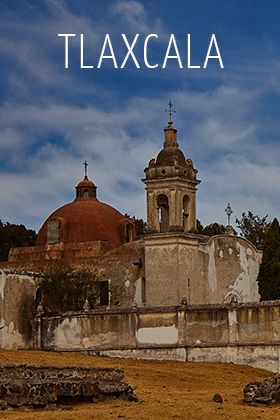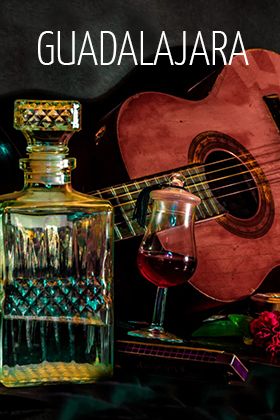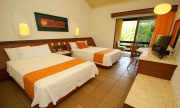About Morelia
by: Travel by México

About Morelia
by: Travel by México
According to historians, the town of the matlalzincas was established in the valley of Guayangareo during the XIV and XV centuries, in what today is Morelia, a territory that was apparently given to them as a reward for participating in the defense of the purépecha empire during the invasion of the tecos from Jalisco. It is known that when establishing in the valley, meaning “shallow and elongated hillock”, the matlalzincas received the name of “pirindas” or rather “the ones in the middle”, due to the location of the place that they called Patzinyegui.
Like any other native town of the epoch, the evangelizing trace of Spain drew attention in a decisive manner, being in this case the franciscans fray Juan de San Miguel and fray Antonio de Lisboa who would form a catechism school called San Miguel where music and art would be taught, among many other trades. This exchange of cultures would inniciate a stage of notable flourishing for the valley of Patzinyegui, a place that later on would be designated by the viceroy Antonio de Mendoza as the place for the founding of the city, a place that would welcome many Spanish settled in michoacan land. There were 60 colonizing families, 9 monks and some native who in May the 18th of 1541 would make the Foundation Act of Valladolid, an act that would receive the title of city by the king Carlos the I of Spain in 1545. Some years later, in 1553, this recenttly founded town of New Spain would be granted the coat of arms. Since then, Valladolid has had a notable sociocultural importance, not only for the evolution of the State of Michoacán, but for Mexico.
The architecture developed in Michoacán is very distinctive, it has notable diverse buildings where elegance and strictness complement each other with great skill. As example we have the Government Palace, building openned as seminary on January the 23rd of 1770, with a barroque façade which is typical of the city. Its main stairway is held by three irregular formed archs, and it has two large patios where government offices are lodged. When it was a seminary, among its distinguished students, standing out were notable people of great influence in national history, such as the botanist and statistician Juan José Martínez de Lejarza; Mariano Michelana, one of the precursors of the independence movement, as well as two of his heroic executors, José María Morelos y Pavón and Agustín de Iturbide; Melchor Ocampo, main inspirer of the Reform Laws in 1857, among many other well known characters.
Among other building of Morelia standing out is also the Clavijero Palace, with its sumptuous barroque expression, inheritance of the Jesuit order, which serves nowadays as central office of the Coordinación de Asuntos Culturales y Turísticos (Cultural and Tourist Coordination), among other government departments; the Federal Palace with a french neoclassic aesthetic, ostentatious in its exterior adornments, with large patios and beautiful arcades of the toscan order; the Municipal Palace, built with a morelian barroque style at the end of the XVIII century; the Palace of Justice with a noticeable french influence, located before the Plaza of the Martyrs, with beautiful interiors, spacious hallways and the pictoric masterpiece of Agustín Cárdenas which is captured in the majestic stairway. And in Morelia we couldn´t leave out the religious temples, among them the Cathedral. Its construction was begun in 1660, being finished 84 years later. It proudly erects two towers of 60 metres of height with reliefs and greek and roman architectural elements, and has sumptuous interiors where three aisles are connected by a central transept, crowned by a beautiful dome. It is said that in the baptism font, carved completely in silver around 1790, Agustín de Iturbide was baptized.
Other places of interest that capture the admiration of tourists are the Conservatory of the Roses, located in front of the Beautiful Garden of Roses, originally the first Convent of Nuns of Valladolid, today School of Music and headquarters of the Choir of the Niños Cantores of Morelia; The Casa de la Cultura Ex-Convento del Carmen, a barroque building of the XVII, XVIII and XIX centuries which shows great domes of white and blue tile, preserving valuable paintings making out of this place one of the most important cultural centres of the city; The Casa Natal de Morelos (Birth Place of Morelos), property where the leyendary independence heroe José María Morelos y Pavón was born; the Calzada Fray Antonio de San Miguel, a promenade where people may join the beauty and calmness of the surroundings, walking from the Fountain of the Tarascas along the cobblestone path and enjoying of the evening on a stone bench.
And of course, the handicrafts of Morelia: the creativity and talent of the artisans of Michoacán may be appreciatd at the Casa de las Artesanías, openned in 1972 for exhibition and sales.
Morelia is known as one of the most valuable historical jewels, since it served as the Church and Convent of San Francisco, first temple of Valladolid that welcomed the franciscans who arrived to the city during the past centuries. So much to see in Morelia! The Museum of Contemporary Art before the Cuauhtémoc Forest, the Museum of Colonial Art, the Museum José María Morelos y Pavón, designated as National Monument by the City of Morelia and the Institute of Anthropology and History, The Museum of Michoacán, building that due to its sumptuousness, lodged during the XIX Century the Emperor Maximiliano of Austria during his visits to Michoacán.
Come and get to know this wonderful city, a visit that will deffinitely be transformed into a real journey through time, an unforgetful experience.



















